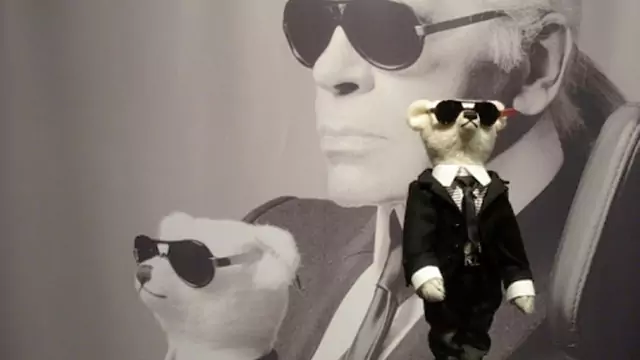Lagerfeld And His Faux Fur Steiff Bear
Katherine Ormerod
October 18 2013
For shoppers seeking comfort in the winter, what could be cozier than wrapping up in faux fur, the stuff of the original teddy bear?
Steiff teddy bears, first manufactured in Germany in 1902, continue to fetch large prices at auction among enthusiasts – the record stands at $165,000. But their impact on the world of fashion has, until now, been limited.
While designers including Karl Lagerfeld and Marco Zanini of Rochas are well-known Steiff collectors – Miuccia Prada is also a long-time fan – this season the fabric has become a fashion must-have.
Designers as diverse as Dries Van Noten, Vika Gazinskaya and Tommy Hilfiger all have Steiff’s signature curly mohair faux fur in their catwalk collections to create everything from cocooning coats to warm linings and easy layers.
“We wanted to develop on the faux-fur trend and do it in a more youthful and playful way,” says Tommy Hilfiger of his decision to use the material in both his men’s and women’s lines for autumn/winter 2013. “Steiff is a heritage fabric that gives a new take on texture and the quality is exquisite.”
Bernhard Wanning, chief executive of Steiff Schulte, agrees that quality is fundamental to the fabric’s popularity. “Our faux furs are known as ‘noble fibres’ [a term that covers mohair, alpaca and cashmere] and as such are priced at the highest end of the market. You can instantly spot the difference between a polyester fur and our natural woven furs,” he says.
Another designer pushing the potential of Steiff fur is Gazinskaya. A member of the so-called “Russian Gang” of street-style stars hailing from Moscow, she also produces collections that sell through Net-a-Porter.
Unlike many of her fellow Russians, she is anti-fur – yet her witty Steiff fox throws – draped across the shoulders complete with modeled heads – will surely provide fodder for fashion week snappers. “My method of activism is giving the customer a fashionable alternative to animal skin,” Gazinskaya says. “To me, Steiff is the ideal alternative to real fur.”
The association with childhood is also part of the fabric’s appeal. “My children all had Steiff teddy bears growing up, so I thought it was a very cool idea to use it in my designs,” says Hilfiger.
For breakout Italian designer Serafina Sama, of Isa Arfen, the connection to childhood is key. “For winter I wanted to explore the idea of comfort – not in the sense of ‘comfortable’, but in the sense of ‘comforting’,” she says. “I wanted my garments to feel protecting in the way you would cosset a child.”
But it’s not just about function – Sama’s powder blue and claret-coloured Steiff faux fur coats prove that the fabric can make a serious style statement.
Summing up the attraction, Alexander Schönfeld, Steiff’s head of strategic marketing and design, says: “I suppose the aim of every fashion collection is to tell a story.” And with real teddy bear fabric, telling that story is a picnic.
